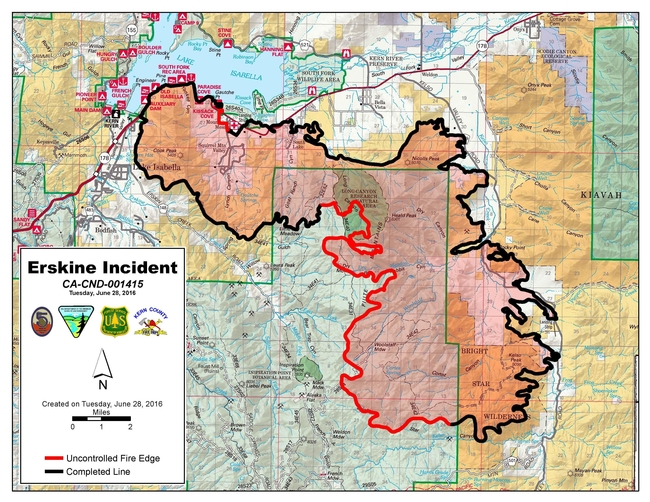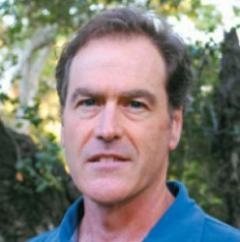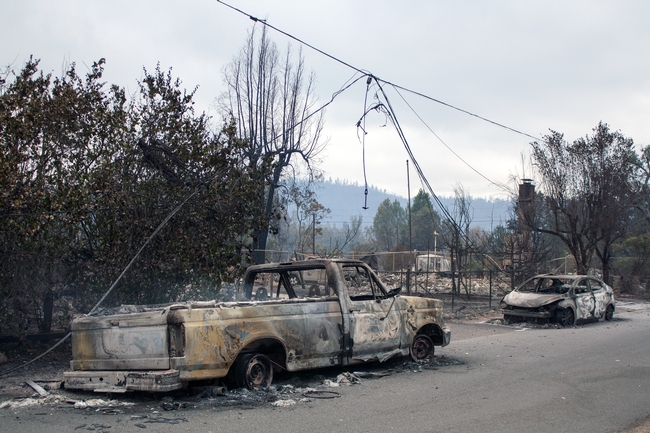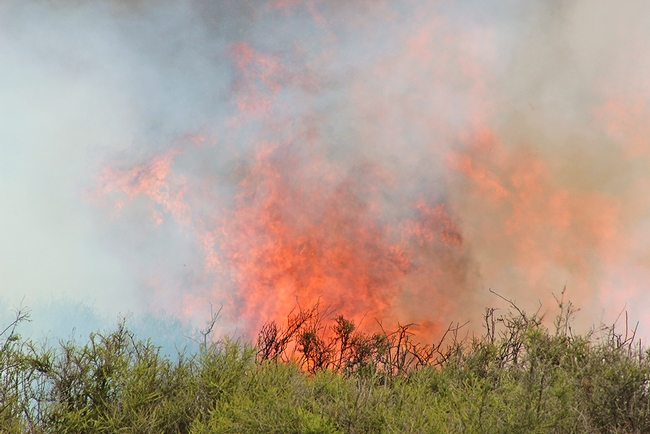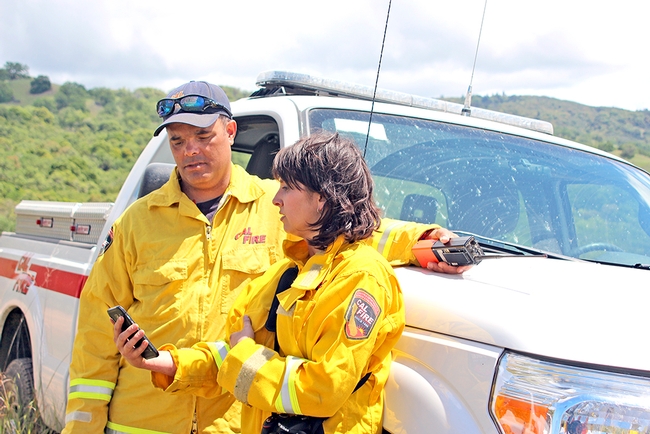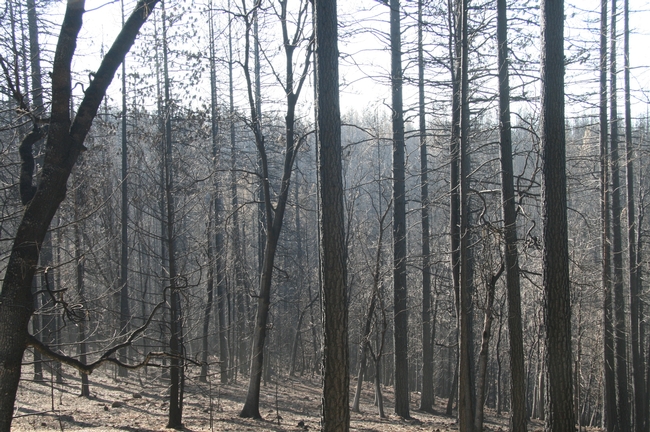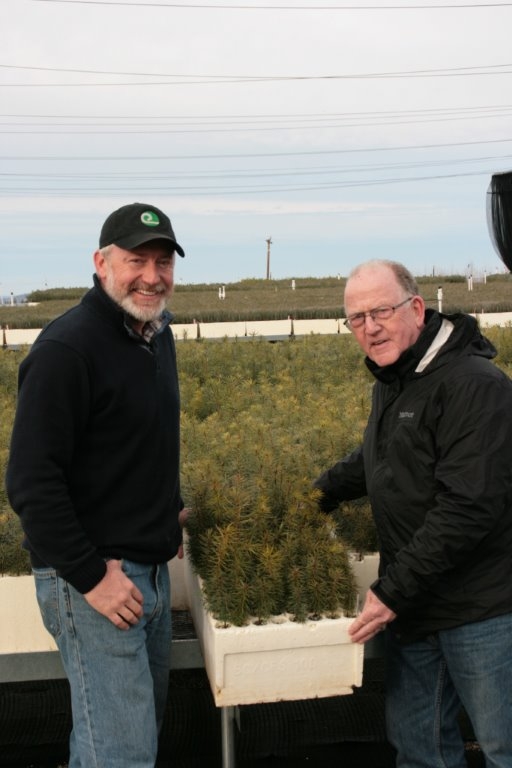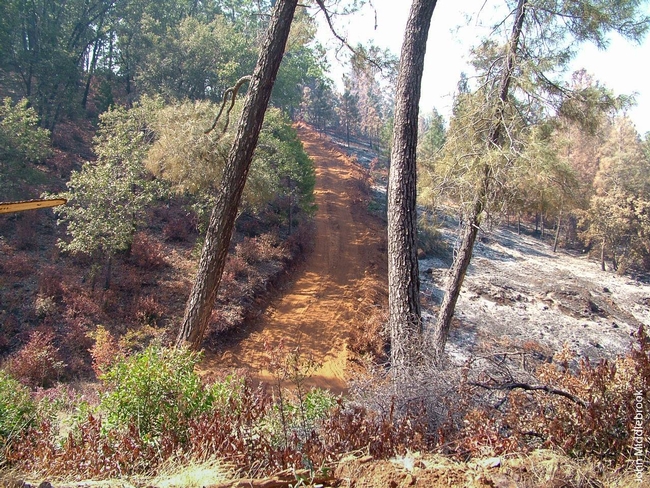Posts Tagged: wildfire
Communities in rural areas are at increased risk of wildfire damage
Weather is one factor causing greater wildfire damage in California, but more critical is the state's exploding population, spawning communities in the once sparsely inhabited ranch and timberland regions long known to burn, reported Scott Smith of Associated Press. The story was picked up by the New York Times, the Orlando Sentinel, the Texarkana Gazette, and other publications.
The Erskine Fire destroyed 285 homes and an AT&T microwave cell hub in a rural-residential neighborhood near Lake Isabella last month. Twelve more homes were damaged. An elderly couple died of smoke inhalation.
Bill Stewart, UC Cooperative Extension specialist and co-director of the Center for Fire Research and Outreach at UC Berkeley said rural areas throughout California, where cattle grazed and loggers harvested trees, have given way to subdivisions of homes in the last 50 years. Residents in these places must be aware of the danger, and not rely on the local fire department to tell them when to clear the grass and trees that could easily spread fire to their homes, he said.
"That's the issue — more people living right next to wildland," Stewart said of the wildfire near Lake Isabella. "If no one lived there, this wouldn't have been a big story."
Both human and environmental factors responsible for intensifying wildfire
Climate change gets part of the blame for the growing frequency and intensity of wildfires in the western United States, but its not the only culprit, reported Jessica Mendoza in the Christian Science Monitor. A new study by UC Cooperative Extension specialist Max Moritz and Michal Mann, assistant professor of geography at George Washington University, found that human activity explains as much about their frequency and location of fires as climate influences.
Climate change affects the severity of the fire season and the amount and type of vegetation on the land, which are major variables in predicting wildfires. However, humans contribute another set of factors that influence wildfires, including where structures are built, and the frequency and location of ignitions from a variety of sources — everything from cigarettes on the highway, to electrical poles that get blown down in Santa Ana winds. As a result of the near-saturation of the landscape, humans are currently responsible for igniting more than 90 percent of the wildfires in California.
“More and more researchers are arguing that anthropogenic influences are really important [to understanding wildfires],” Moritz said. “By leaving them out we're missing a critical piece of the solution.”
While the U.S. Forest Service spends more than $2.5 billion each year fighting fires, other public agencies are exacerbating the wildfire problem. Public funds from the Department of Housing and Urban Development, for example, are going into construction in fire-prone districts.
"It's already a huge problem from a public expenditure perspective for the whole country,” Moritz said. “We need to take a magnifying glass to that. Like, ‘Wait a minute, is this OK?' Do we want instead to redirect those funds to concentrate on lower-hazard parts of the landscape?”
He said human systems and landscapes they live on are linked, and the interactions go both ways. Failing to recognize that leads to "an overly simplified view of what the solutions might be. Our perception of the problem and perception of what the solution is [becomes] very limited."
Fire devoured chaparral plots at UC facility to set up a research project
The prescribed burn was carefully orchestrated by CalFire. Wide swaths of vegetation had been cleared around the 7-acre and 9-acre study areas and the weather carefully monitored before a truck-mounted “terra torch” sent streams of flammable gel into the brush, igniting a raging fire.
The fires at Hopland set up a study for a UC Berkeley doctoral student researching post-fire nitrogen cycling, provided a training ground for new CalFire recruits who will be battling blazes in the summer, and launched a new partnership between HREC and CalFire.
Chaparral shrublands, which cover about 7 percent of California natural lands, are vital California ecosystems. Chaparral contains 25 percent of the state's endemic plant and animal diversity. Nature and Native Americans burned chaparral at regular intervals for millennia, providing fresh new growth for foraging animals.
“After a chaparral fire, you typically get a flush of ephemeral wildflowers, some of which are very rare, which you haven't seen for 30 years or since the last fire,” said Lindsey Hendricks-Franco, a doctoral student at UC Berkeley who is conducting research at Hopland. “The amazing thing about these plants is their seeds can survive in the seedbank for decades. Then heat or smoke or an open canopy can stimulate them to germinate. It can be beautiful.”
The most abundant plant in Hopland chaparral, chamise, is barely fazed by fire. The plant's underground burl will soon sprout after a fire, and chamise seeds readily germinate in ash-enriched soil.
To understand the role of nitrogen cycling in the post-fire chaparral ecosystem, Hendricks-Franco and her research staff clambered over dense brush before the fire to collect soil samples and place ingenious heat sensors that document the burn temperature. After the fire, she returned to each site to collect post-treatment soil samples and heat sensors.
“It's a challenge to put sensors in a fire this hot. Most heat sensors are destroyed by the intense heat,” Hendricks-Franco said. “I painted four- by four-inch tiles with a variety of heat-sensitive paints. The paints change color at different temperatures. When I collect the tiles, they will give me an idea about the temperatures reached in the fire.”
The controlled burn at Hopland was the first step in rebuilding a partnership with CalFire, said Kim Rodrigues, who has served as the facility's director since 2014. The areas burned in April were previously burned by CalFire for fire research in the 1990s.
“We've been here since 1951 offering applied and relevant research,” Rodrigues said. “It's primarily research on ecosystem management in oak woodlands, grassland and chaparral. Fire on the landscape is a management tool.”
The 5,800-acre research facility is one of nine such centers managed by UC Agriculture and Natural Resources in a variety of California ecosystems, from high desert near the Oregon border, low desert in the Imperial Valley, Sierra Nevada forests and San Joaquin Valley farmland. Hopland is also home to 500 sheep.
Hopland CalFire battalion chief Michael Maynard was the incident commander at the April controlled burns, which he said also fulfilled CalFire objectives.
“It's good to be back here to join up with the University of California,” Maynard said. “The fire falls into our realm of training and expertise and we're helping their realm of expertise, which is research. There are 10 plots on this specific research project, so we'll be back soon.”
Maynard brought in newly hired firefighters for training on setting and controlling a prescribed burn.
“It's important that we brush up on our skills. We have seasonal employees that have hired on early and are participating. So the all-around training value is incredible and pays off later in the summer,” Maynard said.
CalFire will be back at Hopland in the fall to implement another chaparral burn so Hendricks-Franco can compare the fate of nitrogen in areas that burn before the hot, dry summer season to areas that burn in the fall and are followed by rain.
View scenes from the controlled burn in the video below:
Lake County plants 100,000 seeds to reforest area destroyed by Valley Fire
Lake County community groups have raised nearly $60,000 to reforest the areas ravaged by last September's Valley Fire. The funds have allowed the greenhouse planting of 100,000 native conifer seedlings that will be ready for distribution in time for the winter 2016 planting season. The Valley Fire, which started in Cobb on Sept. 12, burned more than 76,000 acres.
In October, Greg Giusti, UC ANR Cooperative Extension director and forestry advisor in Lake County, and Korinn Woodard, district conservationist with the Natural Resources Conservation District (NRCS), began to estimate the numbers of seeds needed for the first year of planting.
Two local entities have provided funds to jumpstart the much-needed reforestation in the areas affected by fire. #LakeCountyRising is a collaborative fundraising effort of the Lake County Winegrape Commission, Lake County Winery Association and Lake County Wine Alliance. The Lake Area Rotary Club Association (LARCA) is a nonprofit foundation that comprises the four Rotary Clubs in Lake County – Lakeport, Middletown, Clearlake and Kelseyville. Together they have allocated the nearly $60,000 to the East Lake Resource Conservation District (RCD) to get the seedlings planted and the program in place.
By collaborating with the El Dorado/Georgetown Divide RCD's established native-plant seed collection and propagation program, the funds have resulted in the greenhouse planting of 100,000 native conifers – mostly ponderosa pine, but also some Douglas fir and sugar pine. The species available are suitable for higher elevation burned areas such as Cobb Mountain.
“Getting our forest lands replanted as soon as possible is a cornerstone in the healing process of the spirit of these communities,” said Andy Peterson, chair of the LARCA Fire Relief Committee. “The LARCA Fire Relief Committee identified that as a top priority from day one and we are extremely pleased to be partnering with these other agencies to get that done.”
#LakeCountyRising representatives were interested in helping to support the effort, but any donation would need to go to an established organization responsible for the program. At the same time, LARCA had also identified funding for reforestation efforts as a major priority.
“An experienced agency was needed to lead this effort, and our board agreed that we had the experience and resources to make it happen, if funds were available,” said Charlotte Griswold, East Lake RCD president.
This is where #LakeCountyRising and LARCA stepped up to the plate. Timing was of the essence, as seeds would need to be purchased in time for winter planting in order to have seedling stock available by late 2016.
“It was evident there was urgency, so we presented it to our steering committee and they wholeheartedly supported it,” said Debra Sommerfield, president of the Lake County Winegrape Commission, one of the three organizations involved in the #LakeCountyRising fundraising effort.
“The intention is to make conifer seedlings available for planting each winter for the next few years at a pace that will align with the community rebuilding process and demand,” Griswold said. “We expect to work with NRCS to start taking advance orders before the end of April and to partner with the ag and natural resources programs at area high schools to organize several community planting projects.”
Forest fuel breaks lived up to their billing
UC ANR Cooperative Extension hosted the tour to bring together the different agencies that can collaborate fighting fires, managing forests and building and maintaining fuel breaks to arrest the spread of wildfire.
"Part of the reason (Old Station) didn't burn down is because of all the fuel breaks that the Forest Service had implemented around that general area," said UC ANR Cooperative Extension forestry advisor Ryan DeSantis. "The majority of fires we see are impeded by fuel breaks. They give firefighters time and safer places to fight fires."
Tour participants also discussed maintenance of current fuel breaks, both with and without herbicides. One issue is lack of funding.
"It's good to have everyone come to the table, all the different organizations all the different agencies and get together to discuss what the issues are and how to get through them," DeSantis said.


